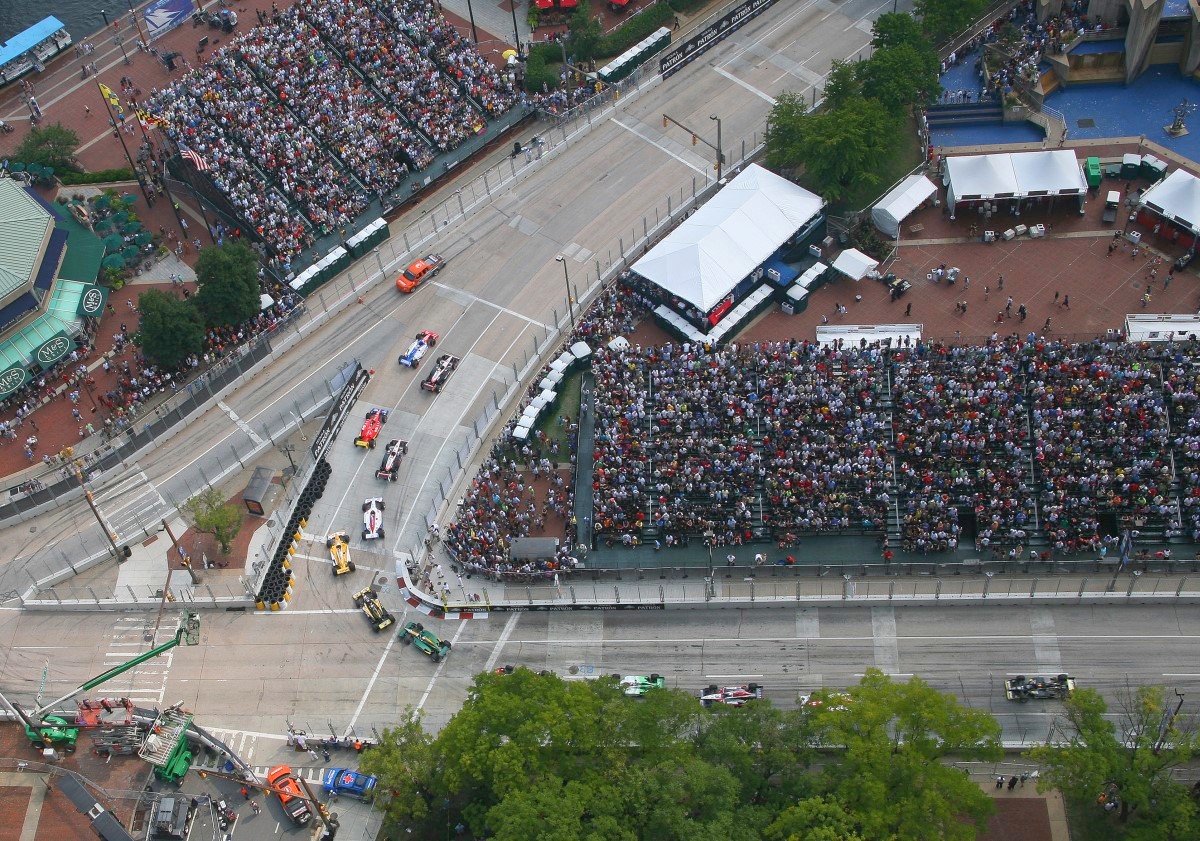Baltimore newspaper turns against Grand Prix
 |
| What started as a hugely popular event has sadly become nothing but negative news in the press for the other 11 months of the year |
[Editor's Note: Apparently the editor's of the Baltimore Sun have decided the Grand Prix must go or they would not have published this article that concludes the GP does not fit the image of the city's future. Where is IndyCar promoting its brand in Baltimore? There is near-zero promotion of the series by IndyCar itself. They only appear to care about the Indy 500 and collecting a sanctioning fee from race promoters….until they go bankrupt and the race goes away. Can't build a fan base with a constant turnover of venues and drivers.]
This will be the third year in a row that Baltimore tries to get its head wrapped around an IndyCar race on our downtown boulevards, and the question is: Are we there yet? Is Baltimore now a Grand Prix town, and is that even something we want?
The world is divided between people who like cilantro and people who hate cilantro, those who like bluegrass music and those who like music, those who fancy motor sports and those who cannot stand them. (I've seen speedboat races, air races, stock cars, funny cars, classic dragsters, Le Mans series, Formula One, and my favorite motor sport remains demolition derby.)
So let's acknowledge that many of you have no interest whatsoever in machines that burn fossil fuels for the purpose of racing. You have no interest in the Grand Prix of Baltimore. In fact, you might even resent the whole thing.
A lot of people in this group are homo omnioppono, which is a sort of Latin word I just made up for the sourpusses who oppose everything. If somebody rolls out a big idea in this town, they immediately declare it stupid, unworkable and ridiculous. This group accounts for most of the region's negativity. They didn't like the Grand Prix before the automobile had even been invented.
On the other hand, there are thousands of happy motorheads who think the Grand Prix is the best thing to happen in Baltimore since the invention of the Berger cookie.
There's a larger group in the middle — not motorheads by any stretch, but also not resentful of people who invest money to promote a new and different attraction in the Queen City of the Patapsco Drainage Basin.
Having gone through a rocky management transition, Baltimore's Grand Prix saw attendance drop in 2012 from its first year here. But it still drew 130,000 spectators. Not all those people love motor sports; a good number were just curious about the spectacle and bought a ticket to see familiar streets turned into a speedway.
So here's my guess about where we are with this thing in 2013:
Baltimoreans who've thought about the Grand Prix for more than 10 minutes — even the ones who live outside the city but have opinions about everything that happens here — are inclined to see it as something that deserves at least quiet support rather than loud condemnation.
Personally, I can't get too worked up about a group of investors and race organizers who try to make money while bringing unusual entertainment, television exposure and millions of dollars in otherwise nonexistent economic benefit to Baltimore on what is historically a slow weekend downtown.
The group that finances this extravaganza expects it to lose money again, but Race On LLC is committed to the Grand Prix of Baltimore through 2016. Assuming it makes financial sense for the project to continue, the races will probably be here until then.
But is this something we want for the city in the long term?
To the extent that the Grand Prix over time could become a factor in the city's identity, then we have to think it over.
Key word: Think.
We didn't get much of a chance to think it over when Mayor Stephanie Rawlings-Blake announced the first Grand Prix. Community groups in Otterbein, Ridgely's Delight and Federal Hill — neighborhoods immediately affected by the race — supported the endeavor. But what I'm talking about is a larger discussion about the nature of a high-profile event and the future of Baltimore.
"This, my friends, is what we call a game-changer," the mayor said of the Grand Prix, just a couple of months after she succeeded Sheila Dixon at City Hall. Given its international nature, Rawlings-Blake said, the races would "change the way the world sees Baltimore."
And how might that be?
Klaus Philipsen, the civic-minded Baltimore architect who thinks and blogs about urban planning, dislikes what the Grand Prix does (if only temporarily) to downtown, with its concrete barriers and fencing.
But he has another, grander objection: the race's heavy-metal aesthetics are in conflict with the city's emerging 21st-century identity.
"Cities are much about branding these days," he says. "Baltimore is desperately trying to get out from under the branding as a crime city or mobtown."
Baltimore, he says, could be the "greener and cleaner city," with progressive efforts toward sustainability, green energy, more parks and public transportation.
Baltimore could be the "creative and quirky" city, with its cool design, arts and music scene.
"Of course," Philipsen adds, "there is the biotech and knowledge industry." Not to mention our universities and world-class medical institutions. Baltimore could be known as an "eds and meds" city.
Those are all possibilities.
"But," says Philipsen, "none of the above identity options works well with racing big, stinky and noisy cars through downtown at crazy speeds while turning the whole tourist central area into a chain-link and concrete gulag for a month during the high visitor season."
As I said, he's a thinking man, and there's a lot to think about here. Baltimore Sun
